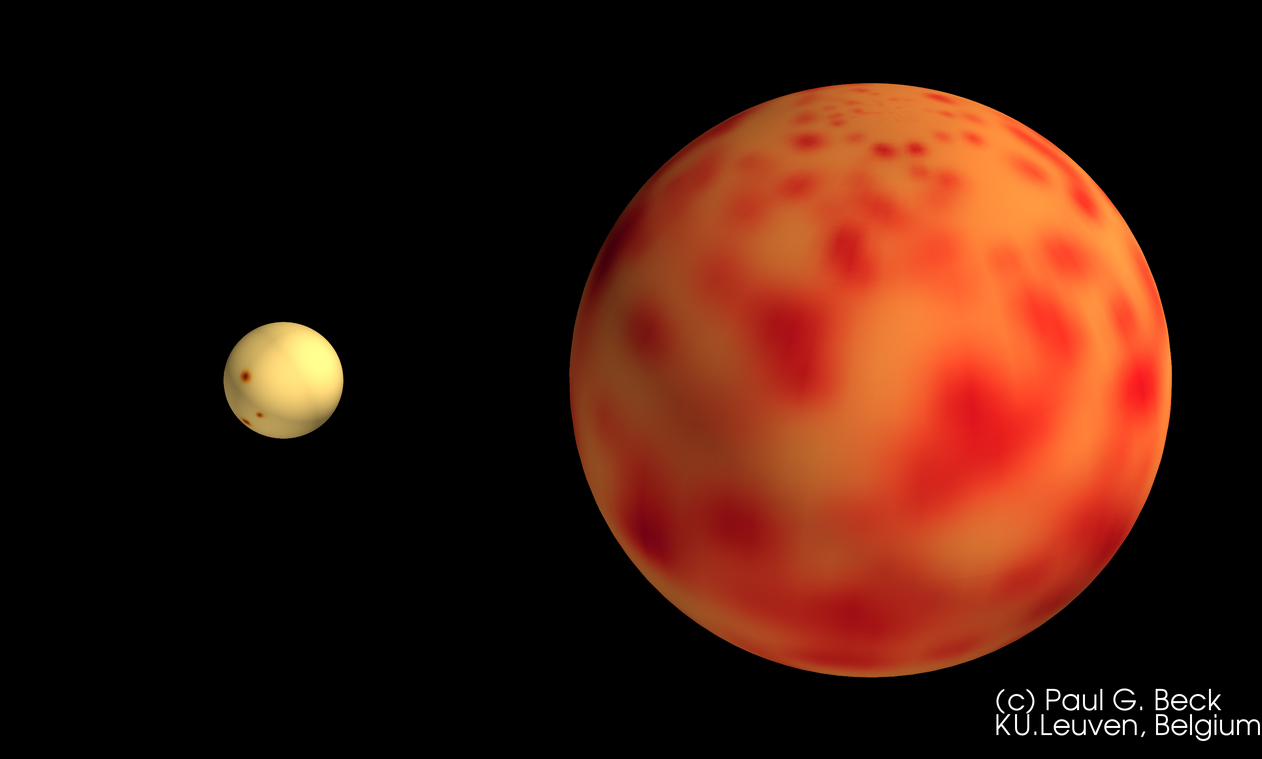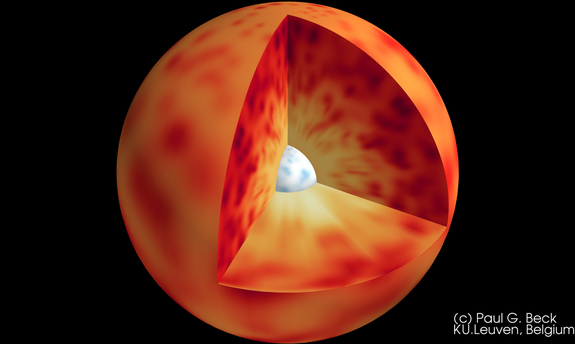'Starquakes' Reveal Hidden Secrets Inside Stars

Starquakes in red giants — seismic shivers that can run all the way to the hearts of those stars — now reveal that their cores spin much faster than their surfaces, researchers find.
This discovery could shed light on how the otherwise mysterious interiors of stars evolve over time, scientists said.
Red giants represent the swollen fate that awaits stars such as our own sun as they begin to exhaust their hydrogen fuel. As they do so, their cores contract and their outer envelopes expand and cool.
Approximately 5 billion years from now, this process will force our sun to swell to more than 100 times its current size, transforming it into a red giant. [Video: How the Sun Will Die]
The shrinking of the hearts of these stars should make the cores whirl faster, just as spinning ice skaters turn faster if they pull their arms in. Still, until now, scientists only had indirect evidence of this occurring.
Now, by analyzing starquakes, researchers have discovered the centers of these stars apparently spin at least 10 times faster than their surfaces.
Starquakes
Sign up for the Live Science daily newsletter now
Get the world’s most fascinating discoveries delivered straight to your inbox.
Stars experience violent quaking that generates sound waves. These ripples zip around inside the stars and cause tiny rhythmic variations in their brightness. By studying these changes, scientists can better understand stars' interiors — an emerging scientific field known as asteroseismology.
Using NASA's Kepler spacecraft and ground-based telescopes, researchers observed three red giants for more than 500 days. Vibration-linked variations in their brightness showed how fast their cores were spinning.
To find out how fast their surfaces were rotating, the scientists looked at the fingerprints of elements in the stars, which appear as black lines in the spectrum of their light, spread out into its various wavelengths.
As a star rotates, one side of its surface is moving toward us while the other is curving away. Much as how an ambulance siren sounds higher-pitched as the vehicle drives toward you and lower-pitched as it moves away, starlight coming from the side of a star's surface spinning toward us gets shifted slightly to the blue end of the spectrum, while light emitted from the side turning away from us is slightly reddened, in a process called the Doppler shift. This broadens the width of the black lines in a star's spectrum, the extent of which can reveal how fast its surface is rotating.

Probing below the surface
All in all, the surfaces of these red giants take about a year to complete one rotation. In comparison, their cores spin much faster, at about one rotation per month.
"We are able to sense deep below the surface of distant stars and can probe the rotation of their core," study lead author Paul Beck, an astronomer at the Catholic University of Leuven in Belgium, told SPACE.com.
The inner workings of stars influence how they evolve, and their rotation can influence how their innards flow and behave. "Understanding how a star rotates deep inside helps us to understand how stars like our sun will grow old," Beck said.
Beck hopes to analyze more red giants of a variety of different ages to see how the rotation of their cores and surfaces might change over time.
He and his colleagues detailed their findings online Dec. 7 in the journal Nature.
This story was provided by SPACE.com, a sister site to Live Science. Follow SPACE.com contributor Charles Q. Choi on Twitter @cqchoi. Visit SPACE.com for the latest in space science and exploration news on Twitter @Spacedotcom and on Facebook.











